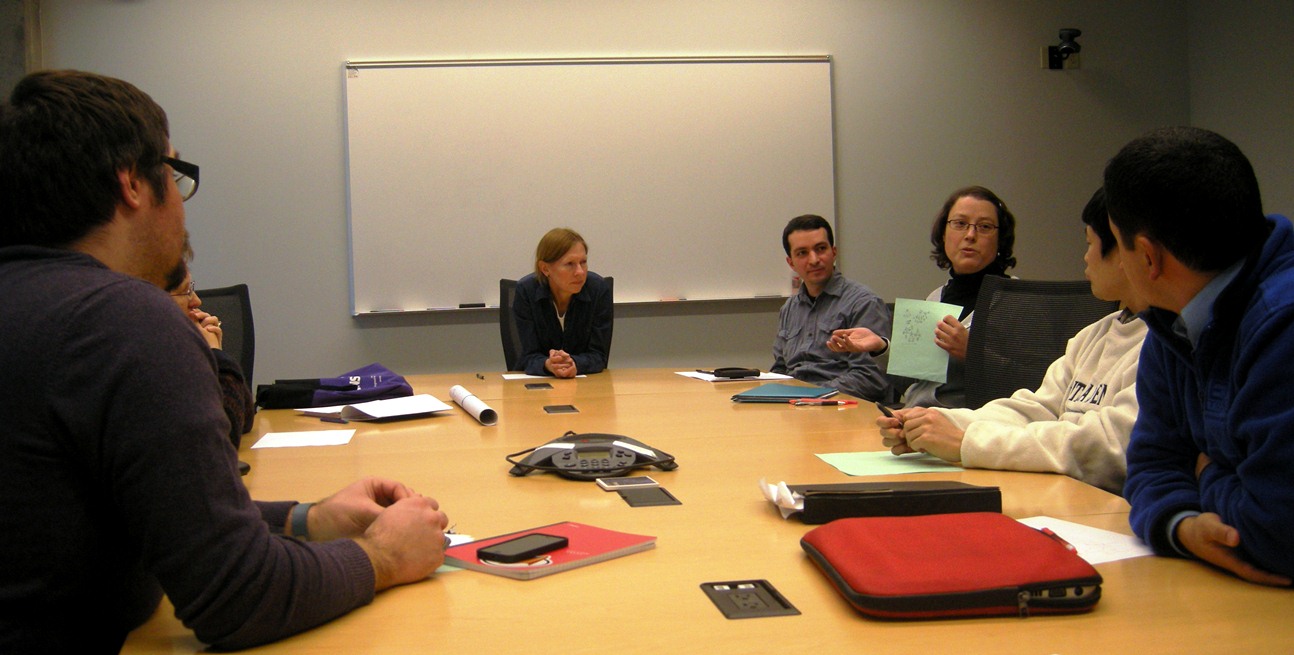TULIP
Seated at the table with them is Heidi Diefes-Dux, professor of Engineering Education. She’s leading the discussion, which begins with a focus on teaching statements. She describes it as being the “core to your beliefs” as an instructor, and asks those participating to create a visual representation of their own teaching statement.
This is a typical session for the Teaching Undergraduates for Learning Investment Program (TULIP). The group meets once every several weeks throughout the fall and spring semesters. The program was established with a gift from Interdisciplinary Engineering alum Geoff Crowley (BSIDE 1974) and his wife, Kelly. It is at the core of the School’s mission “to transform engineering education based on scholarship and research.”
Dr. Diefes-Dux says TULIP has evolved since it began several years ago. She calls it a good compliment to Educational Methods for Engineering, which is a three-credit hour course for students throughout the College of Engineering.
“How can we have these different levels of engagement of people thinking about and reflecting on their teaching, and learning new things?” she asks. “That’s the idea – to provide a mechanism through ENE that people can learn more about teaching and improving their teaching.”

After drawing up a teaching statement, each instructor explains theirs to the group. The conversation quickly moves to related topics in the classroom, such as keeping the roughly 2,000 FYE students engaged during class.
Hadi Ali, a doctoral candidate in ENE, is one of those attending this TULIP session. He goes as often as he can, because he says there is a lot to gain during the 90 minute meetings.
“It’s a great opportunity to reflect on my teaching and be part of a community of practice,” he says.
Hadi points out the fact that all the instructors are given the same course learning objectives, yet they have different perspectives on how to teach the material. He thinks having the discussions through TULIP reinforces the choices they each make.
While this session focused on teaching statements, others have covered homework, design and working in teams.
“We brought in expertise from across the ENE faculty,” Dr. Diefes-Dux says. “I’d like to bring in more people from outside of ENE.”
And Hadi would like to see instructors from outside of ENE get involved, even if it is just visiting a session.
“Teaching, I found, is a very complex personal and professional exploration process,” he says. “You get to know yourself, as well as others. So, come to learn from others and help others learn from you.”
While TULIP directly impacts the instructors’ teaching skills, the lessons learned and techniques they share eventually benefit the FYE students, who will become part of the future generation of Purdue engineering leaders and innovators.
